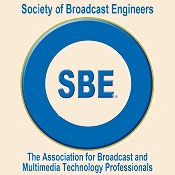Thursday, January 27th Reliable Internet Streaming Transport (RIST) Protocol By Kurt Caruthers of Cobalt Digital "The Reliable Internet Streaming Transport (RIST) protocol allows the use of the Internet as a cost-effective, reliable, low-latency contribution link. Developed jointly by an aggregate group of experts and built on top of existing RFC standards, RIST benefits from cumulative years of real-world experience. RIST leads to a more technically robust solution than any single vendor can ever create - no matter the application, use case, or environment it is deployed in." 7:00 PM - Meeting/Program This meeting is Virtual Connection information will be distributed in the days just prior to the meeting. Our Chapter 23 Years AgoLast Meeting's Minutes
Our December Holiday Dinner was canceled due to Covid.
Job Opening: WKOW TV
For information Click Here
|
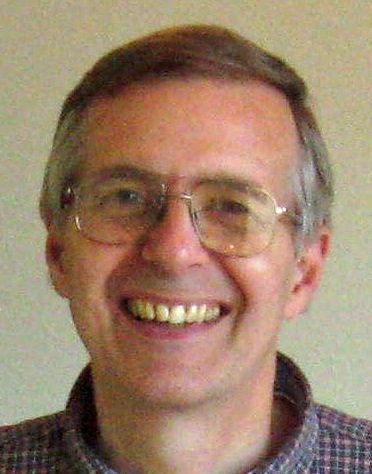
|
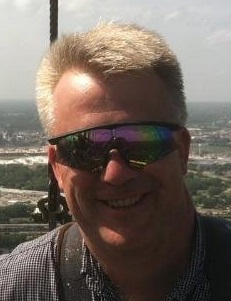
|
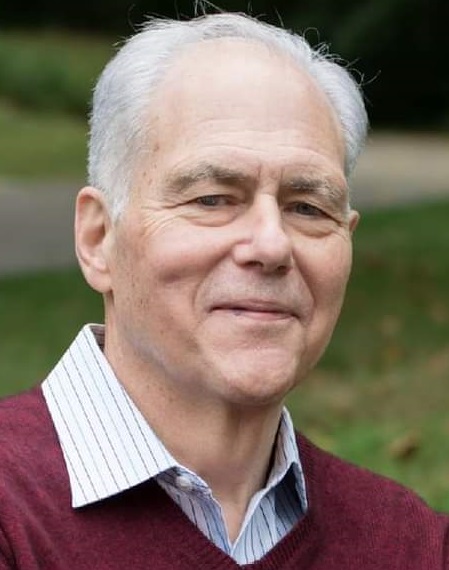
|
|
Dennis Baldridge (obit) |
Jeremy Ruck (obit) |
Terry Baun (obit) |
ATSC 3.0 Downconverters, Premium NextGen TV Shopping List
By Vicki Way Kipp
Supply-Driven Scarcity
The pandemic-related chip shortage and supply chain issues have actually increased the supply of high-end NextGen TVs manufacturers are producing. TV set manufacturers have prioritized high-profit margin products such as large NextGen TVs, given the scarcity of chips. The supply shortage is delaying the rollout of low-priced NextGen receivers.
Dolby NextGen Ad Campaign
Dolby is expected to launch a TV ad campaign called "Dolby's Sound Decisions," promoting NextGen audio features like dialogue enhancement and a consistent volume level. Dolby's ad titles include "Dialogue Drama" and "Sound Surprise."
CES NextGen logo
Manufacturers may put the official CES NextGen logo on their TVs if they meet ATSC 3.0 interoperability test specifications, but logo use is optional. www.cta.tech/Membership/Member-Groups/Video-Division/NEXTGEN-TV
Chipset
It's worth noting that most ATSC 3 receiver chips contain both ATSC 1.0 and ATSC 3.0 receivers.
Now shipping...
Converters
$199.99 HDHomeRun FLEX 4K HDFX-4K Converter
$299.99 HDHomeRun FLEX 4K Development Edition (for Wireshark) HDFX-4K-DEV Converter
$329.00 ZapperBox M1 Converter
$849.99 LG 48" 4K Smart OLED TV w/ ThinQ AI® OLED48A1PUA
$900.00 AirWayvz Redzone dongle (for TS-Reader) RZR-1400
TVs
$1,599.99 Samsung Neo 55" QLED 4K Smart TV QN90A
$1,299.99 Sony Bravia 65" 4K HDR Full Array LED with Smart Google TV (2021) XR-65X90J
$1,799.99 LG GX Gallery 55" 4K Smart OLED TV with Alexa (2020) OLED55GXPUA
$1,999.99 LG G1 Gallery 55" 4K Smart OLED Evo TV with Alexa, AI-Power, Dolby, WiSA Ready (2021) OLED55G1PUA
$2,199.99 Sony Bravia 65" A80J 4K OLED Smart TV (2021) XR65A80J
$2,999.99 Sony Bravia 75" 4K HDR Full Array LED with Smart Google TV (2021) XR-75X95J
$2,799.99 LG G1 65" with Gallery Design 4K Smart OLED TV w/AI ThinQ® OLED65G1PUA
$2,799.99 Samsung Neo 65" QLED 8K Smart TV (2021) QN800A
$3,499.99 LG QNED 65" MiniLED 99 Series 8K Smart TV w/ AI ThinQ® (2021) 65QNED99UPA
$2,499.99 Sony Bravia 55"4K HDR OLED with Smart Google TV (2021) XR-55A90J
$3,799.99 Samsung Neo 65" QLED 8K Smart TV QN900A
$5,499.99 Sony Bravia 75" 8K HDR Full Array LED with Smart Google TV (2021) XR-75Z9J
$19,999.99 Sony Bravia 100" 4K HDR Full Array LED with Smart Google TV (2021) XR-100X92
Dual ATSC A/53 and A/322 DTV Receiver Chipsets
Sony "Project Ashley" Demodulator CXD2878ER
Sony "Project Luke" Tuner and Demodulator CXD6801GL
Saankhya Labs Pvt. Ltd. Mobile SL3000, SL3010
A/322-only NextGen Mobile Receiver Chipsets
Saankhya Labs Pvt. Ltd. Mobile SL4000 Mobile ATSC 3.0 receiver*
*Used in ONE Media's Mark One Android phone w/ UHF ATSC 3.0 RX for T-Mobile, AT&T, Verizon. The Mark One is named after Mark Aitken, Sinclair Broadcast Group's Senior VP of Advanced Technology.
https://saankhyalabs.com/worlds-first-atsc-3-0-compliant-mobile-phone-mark-one-powered-by-saankhya-labs-sl-4000-chipset/
https://www.tvtechnology.com/news/one-medias-atsc-30-smartphone-becomes-a-reality
Professional Receivers
Bitrouter ATSC3Pro Linux-based ATSC 3.0 single stream professional receiver software. Demodulator sold separately.
DekTec Atsc3Xpert - ATSC-3 reception and analysis software
DS Broadcast BGD4100 -3G 4K UHD/HD Integrated Receiver Decoder
Open Source SRT+STLTP: ATSC 3.0 Virtual Demod and ROUTE object extraction for remote market deployment testing by Jason Justman, NGBP.org
Sencore ARD 3400 ATSC 3.0 Decoder
StreamScope XM Verifier ATSC 3.0 broadcast stream analyzer and verification software
Packet Capture Dongles
There are downconverters that can capture packets to reveal portions of the ATSC 3.0 transport stream's protocol stack.
NGBP Open Source Tools: ATSC 3.0 STLTP pcaps captures MMT and ROUTE-DASH and A/344 Broadcaster Application payload ATSC 3.0 transmissions. Created by Jason Justman, NGBP.org.
Silicon Dust promotes the HDHomeRun HDFX-4K-DEV is promoted for "…development and tinkering if you want to do more than watch TV. Only useful for developers." I suspect that the Development edition could be useful for broadcast engineers, as well. Silicon Dust's counsel that the HDFX-4K-DEV is "Only useful for developers" actually heightens its appeal.
The HDFX-4K-DEV can extract ALP and IPv4 PCAP files for Wireshark. ATSC 3.0 Link Layer Protocol (ALP) decoder for Wireshark by Nick Kelsey of SiliconDust.
https://github.com/Silicondust/wireshark
https://shop.silicondust.com/shop/product-category/hardware/?scrollto=663495
AirWayvz, meanwhile, offers ATSC 3.0 analyzer software called TvXplorer Suite for their Redzone dongle RZR-1400. https://redzonereceiver.tv/
ModCod Simulators
If you want to get a jump start at deciding how to divide your bandwidth and configure your PLPs,
DekTec Atsc3Xpress - ATSC-3 signal generator software
Enensys ATSC 3.0 Calculator (Free)
Outlook
If the ATSC 1.0 transition is any indication, NextGen consumer receivers should start to come down in price as soon as the pandemic-related chip shortage and supply chain issues are resolved.
National EAS Test Results
The large majority of the EAS Participants - radio and television stations, cable television systems, direct broadcast satellite (DBS), Satellite Digital Audio Radio Service (SDARS), digital audio broadcasting systems, and wireline video systems - reported successful receipt and retransmission of the nationwide test. The test thus demonstrated that the national EAS distribution architecture is largely effective as designed.
As anticipated, the test also shed light on issues with reception and retransmission of the alert. In summary:
• The test message reached 89.3% of the EAS Participants, an increase from 82.5% in the 2019 test.
• The overall retransmission success rate was 87.1%, which is an increase from 79.8% reported in 2019
• Test participants reported roughly half as many issues with receipt and retransmission as compared to 2019
• Radio broadcasters had a participation rate of 79.9%, down from 82.0% in 2019
• Television broadcasters' participation rate was 62.6%, down from 68.2% in 2019
• 1027 (5.5%) did not receive a transmission
• 389 (2.1%) had equipment issues
• 103 (0.6%) had configuration issues
• 78 (0.4%) had signal issues
• 53 (0.3%) had power issues
• 48 (0.3%) had antenna issues
• 31 (0.2%) had clock issues
• 26 (0.1%) had lightning issues
• 17 (0.1%) had "out of broadcast range" issues
• 7 (0.0%) had internet issues
• 1147 (6.2%) did not receive a transmission
• 565 (3.1%) had equipment issues
• 94 (0.5%) had configuration issues
• 64 (0.4%) had power issues
• 47 (0.3%) had clock issues
• 31 (0.2%) had signal issues
• 29 (0.2%) had antenna issues
• 29 (0.2%) had "out of broadcast range" issues
• 22 (0.1%) had lightning issues
• 18 (0.1%) had low power issues
• 13 (0.1%) had internet issues
• 4 (0.0%) had delivery issues
The Report's Conclusion: The 2021 nationwide EAS test demonstrated an improvement from 2019. Receipt and retransmission rates increased, while reported monitored source complications markedly decreased. As observed in 2019, the system would largely perform as designed, and it would reach the vast majority of the public, if activated without the availability of the Internet. The Bureau will continue to work with FEMA, EAS Participants, and other EAS stakeholders to improve the system and ensure that it remains effective and can transmit timely and accurate national alerts to the public when they are needed the most.
Amateur Radio News
Compiled by Tom Weeden, WJ9H
In what's billed as "A day of education to share ideas, experiences, knowledge and fellowship among Amateur Radio operators," the 23rd annual Ham Radio University is scheduled for Saturday, January 8th. Normally held in person in the Brookville, New York area, due to Covid complications, it will be held virtually for the second year. The 19 forums in this year's event include sessions on Grounding, Basics of HF (high-frequency) Operating, Satellite Operation, Contesting, HF Digital Modes, Software Defined Radios, and Raspberry Pi Apps for Ham Radio. As in past years, participation in HRU 2022 is free. An optional donation of $5 is suggested. Additional information and registration is online, at hamradiouniversity.org .
On December 24th, experimental station WI2XLQ was on the air on 486 kHz AM to commemorate the Christmas Eve 1906 transmission by Reginald Fessenden. Fessenden claimed one of the first voice and music transmissions over radio from Brant Rock, Massachusetts. (While some doubt Fessenden's Christmas Eve broadcast actually happened, the Ocean Liners Magazine description of the alleged broadcast can be found at ) oceanlinersmagazine.com .
Brian Justin, WA1ZMS, holds the experimental license for the commemorative station, which used a "homebrew" 1921-era MOPA (Master Oscillator Power Amplifier) exciter with Heising modulation, followed by a modern 500 watt linear amplifier. A video of reception of WI2XLQ on 12/24/2021 is at youtube.com .
By the Numbers
| AM, FM, FM Educational | 15,389 |
| UHF, VHF Commercial and Educational | 1758 |
| UHF, VHF Class A | 382 |
| FM, UHF, VHF Translators/Boosters | 11,941 |
| UHF, VHF Low Power TV | 1928 |
| Low Power FM | 2069 |
| _____________________________ | ______ |
| TOTAL BROADCAST STATIONS | 33,467 |
Certification and Education
compiled by Jim Hermanson
The Open 2022 Exam Schedule
| Exam Dates | Location | Application Deadline (to SBE National Office) |
June 3-13, 2022 |
Local Chapters (Madison Area) |
April 15, 2022 |
August 5-15, 2022 |
Local Chapters (Madison Area) |
June 10, 2022 |
November 4-14, 2022 |
Local Chapters (Madison Area) |
September 9, 2022 |
Each year, account balance permitting, Chapter 24 will reimburse half the application fee to any member of Chapter 24 in good standing who successfully obtains any SBE certification level not previously held by that member. Contact the SBE Chapter 24 chairperson or certification chairperson for more information.
When you are ready to take an SBE exam, note the open exam schedule, complete the appropriate application (found here... http://www.sbe.org/applications) and send it directly to the SBE National office (see address below) with the respective fee. You will be notified once your application is approved. Your local certification chairman will receive a list of applicants and exams in his/her chapter and arrange for a proctor. He/she will then contact applicants to schedule a mutually agreeable date, time, and place for the exam(s) within the respective exam date window. This must be coordinated before the exam will be sent by SBE National. Completed exam(s) will be mailed back to SBE National for grading. Pass/fail results will be mailed directly to the applicants within approximately six weeks.
The majority of SBE certifications are open book and access to the Internet is allowed to give a more "real world" situation.
|
Megan E. Clappe Certification Director 9102 N. Meridian St. Suite 150 Indianapolis, IN 46260 317-846-9120 Fax mclappe@sbe.org |
To apply for a specialist certification, an individual must currently hold certification on the Broadcast Engineer, Senior Broadcast Engineer, Professional Broadcast Engineer or Broadcast Networking Engineer Certification level. Exams must be completed within three hours and consist of 50 multiple-choice questions (two points each) and one essay question (20 points maximum). Examinees are provided one essay question to answer. Exams are pass/fail, and a score of 84 is a passing grade.
Next Generation of CertPreview
In 2021, the Ennes Educational Foundation Trust allocated funds to the Certification Committee to develop a new CertPreview program. The committee contracted the firm of Stevens and Stevens to create this program. Development work is underway, with an expected release date of late 2022. A primary difference is that CertPreview will be Web-based. A major advantage to this is that updates to the sample test questions can be made in real-time, as technology advances. Watch for more information this year on the rollout of the new CertPreview format.
January Webinars
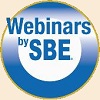
SNMP, Module 3: SNMP - What is it Good For? Absolutely Everything!
January 13, 2022 | 1 p.m. CT
Module 3 of the SNMP Series will explore the use of the Simple Network Management Protocol in broadcast facility control, with a focus on the benefits. We will look at how broadcasters are using SNMP to make their lives easier, and their facilities more robust and resilient. From the simple sharing of information to consolidate data and functions from multiple physical sites onto a single display, use of SNMP has expanded to include control of virtual audio switchers, automatic site handovers and other processes that can help engineers resolve technical issues quickly and maximize up-time!
Your Instructor
Tony Peterle, Manager, Worldcast Systems, Inc.
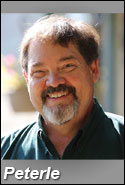
Tony Peterle has been involved in broadcasting since 1974, as on-air talent, trafficwatch pilot/reporter and chief engineer in Ohio, Hawaii, Seattle and Kansas City. He joined Worldcast Systems in 2005, and started learning about SNMP in 2007, as part of a new facility control hardware/software development. Author of SBE University courses on SNMP, Tony has given countless seminars, webinars and Ennes sessions on its use, with hands-on demonstrations at PREC and the Wisconsin Broadcasters Clinic.
SBE Recertification Credit
The completion of a Webinar from Webinars by SBE qualifies for 1 credit, identified under Category I of the Recertification Schedule for SBE Certifications.
Registration and Pricing
This webinar will be approximately 90 minutes long.
SBE Members: $62
MemberPlus Members FREE
Non-Members: $92
Register Here
Questions?
If you have questions regarding this course, contact Cathy Orosz via email or by phone at 317-846-9000.
More information about registering using the SBE MemberPlus benefit
All SBE webinars are included at no additional cost for members who renew or join using the $175 SBE Member Plus membership option. Through this option you get access to all SBE webinars for no extra cost. Members can renew and newcomers may join online at the SBE website using the SBE MemberPlus option.
Access to the SBE webinars through the SBE MemberPlus program is limited to the MemberPlus-purchaser only. You are not permitted to distribute, sell, copy, share, project or otherwise make the webinars available to any other individual or group without express written permission by the SBE.
Several state-of-the-art radio, TV, multimedia, and IT engineering training is available through this page...
http://sbe.org/education/webinars-by-sbe/on-demand-webinars/
More information on SBE Education Programs is available here...
http://www.sbe.org/education/
Views expressed herein do not necessarily reflect the official position of the Society of Broadcast Engineers (SBE), its officers, or its members. SBE Chapter 24, Inc. regrets, but is not liable for, any omissions or errors. Articles of interest to Chapter 24 members are accepted up to the close of business the 1st day of each month. Send your article to lcharles@sbe.org.
